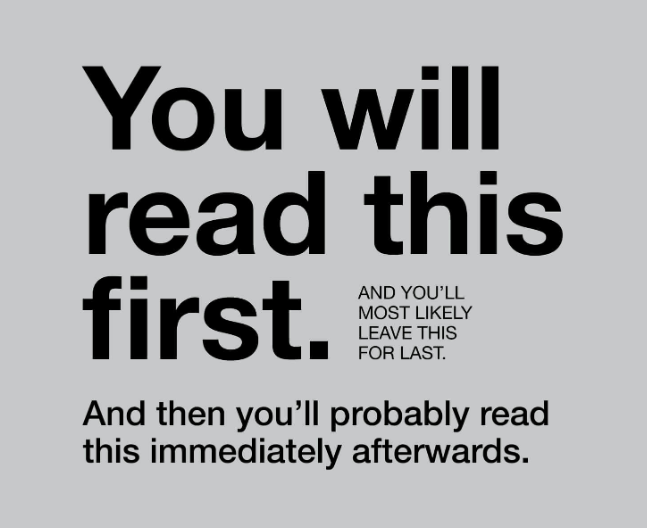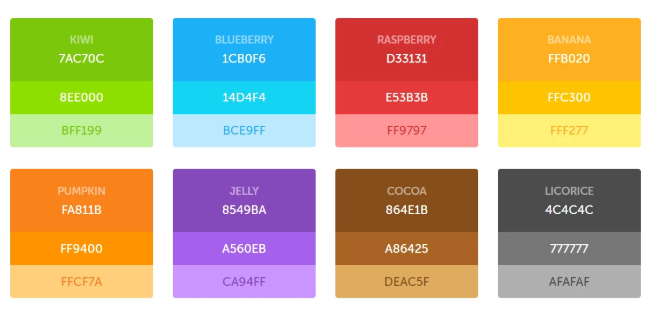80% of Professionals Say Poor Presentation Design Undermines Their Message. Don’t Let Yours Be One of Them.
Google Slides isn’t just another tool—it’s your secret weapon for creating presentations that captivate, persuade, and leave a lasting impact. Whether you’re pitching to clients or training your team, mastering collaborative presentations can elevate your game from forgettable to unforgettable.
Think about the last time you sat through a cluttered, text-heavy slide deck. Painful, right? Now imagine delivering crisp, visually stunning presentations that keep your audience hooked. With real-time collaboration, cloud-based accessibility, and powerful design features, Google Slides makes it easier than ever to create professional-grade slides—no design degree required.
Here’s the truth: great slides aren’t about flashy animations. They’re about visual hierarchy, consistent layouts, and strategic storytelling. In this lesson, you’ll learn how to leverage Google Slides’ key features like a pro, from seamless team collaboration to crafting slides that communicate with clarity.
Ready to transform your presentations? Let’s dive in.
Key Features of Google Slides
Google Slides stands out as a cloud-based presentation tool not just for its accessibility, but for features that streamline collaboration and design. Here's what makes it powerful:
1. Collaborative Editing
Work in real-time with teammates, clients, or students—no more emailing slide decks back and forth. Multiple users can edit simultaneously, with changes syncing instantly. Comments and suggestion modes make feedback effortless.
Pro Tip: Use @mentions in comments to tag collaborators and assign tasks directly in slides.
2. Cloud Storage & Accessibility
Access your presentations from any device, anywhere. Google Slides automatically saves to Google Drive, eliminating the risk of lost files. Offline mode ensures you can keep working without internet.
- No software installation needed—runs in any browser
- Share via shareable links with customizable permissions (view/edit/comment)
3. Google Workspace Integration
Seamlessly connect with tools like Google Docs, Sheets, and Meet. Embed live data from Sheets, or present directly in a Meet call without switching tabs.
Time-saver: Import charts from Sheets that update automatically when source data changes.
4. Professional Design Tools
Create polished slides without design expertise:
- 100+ templates for business, education, and creative projects
- Custom themes, fonts, and color palettes to match your brand
- Drag-and-drop images, videos, and vector icons
5. Animations & Transitions
Add movement to emphasize key points without distracting your audience:
Animations
- Fade, fly-in, or bounce effects for text/objects
- Control timing and order of animations
Transitions
- Slide, fade, or zoom between slides
- Adjust speed and direction
Note: Overusing animations can look unprofessional. Stick to 1-2 styles per presentation.
Key Features of Google Slides
Google Slides stands out as a cloud-based presentation tool not just for its accessibility, but for features that streamline collaboration and design. Here's what makes it powerful:
1. Collaborative Editing
Work in real-time with teammates, clients, or students—no more emailing slide decks back and forth. Multiple users can edit simultaneously, with changes syncing instantly. Comments and suggestion modes make feedback effortless.
Pro Tip: Use @mentions in comments to tag collaborators and assign tasks directly in slides.
2. Cloud Storage & Accessibility
Access your presentations from any device, anywhere. Google Slides automatically saves to Google Drive, eliminating the risk of lost files. Offline mode ensures you can keep working without internet.
- No software installation needed—runs in any browser
- Share via shareable links with customizable permissions (view/edit/comment)
3. Google Workspace Integration
Seamlessly connect with tools like Google Docs, Sheets, and Meet. Embed live data from Sheets, or present directly in a Meet call without switching tabs.
Time-saver: Import charts from Sheets that update automatically when source data changes.
4. Professional Design Tools
Create polished slides without design expertise:
- 100+ templates for business, education, and creative projects
- Custom themes, fonts, and color palettes to match your brand
- Drag-and-drop images, videos, and vector icons
5. Animations & Transitions
Add movement to emphasize key points without distracting your audience:
Animations
- Fade, fly-in, or bounce effects for text/objects
- Control timing and order of animations
Transitions
- Slide, fade, or zoom between slides
- Adjust speed and direction
Note: Overusing animations can look unprofessional. Stick to 1-2 styles per presentation.
Navigating the Google Slides Interface
Mastering the Google Slides workspace is your first step to creating professional presentations efficiently. Here's a breakdown of the key components:
1. Menu Bar & Toolbar
The Menu Bar (top) houses all major functions under dropdown categories:
- File: Share, download, or publish presentations
- Insert: Add images, charts, videos, or diagrams
- Slide: Manage layouts, transitions, and speaker notes
The Toolbar below provides one-click access to formatting tools, alignment options, and insert buttons.
2. Slide Pane & Workspace
The Slide Pane (left) shows thumbnails of all slides. Right-click to:
- Duplicate or delete slides
- Rearrange with drag-and-drop
- Apply transitions to multiple slides
The central Workspace is where you edit the selected slide. Click any element (text boxes, images) to modify.

Google Slides interface with key areas highlighted
3. Hidden Power Tools
Ruler & Guides
Enable from View > Show ruler to align objects precisely. Right-click the ruler to add guides.
Pro Tip: Set default guides (View > Guides > Set default guides) for consistent spacing across slides.
Speaker Notes
Found at the bottom of the workspace. These private notes help presenters remember key points—visible only in Presenter View.
4. View Options
Switch between perspectives for different tasks:
- Slide Sorter: Grid view for reorganizing slides (icon at bottom-left)
- Presenter View: Preview with notes during presentations
- Zoom: Adjust from 50% to 200% for detailed editing
Keyboard Shortcut: Press Ctrl+Alt+Shift+F (Windows) or Cmd+Option+Shift+F (Mac) to toggle full-screen editing.
Design Principles for Professional Presentations
94% of audiences say visual appeal determines their engagement with presentations. These research-backed strategies will transform your slides:
1. Master Visual Hierarchy
Control where your audience looks first using these Google Slides techniques:
Size Dominance
Make key elements 2-3x larger than supporting text

Strategic Contrast
Use Format > Format Options to adjust transparency for layered effects
F-Pattern Flow
Place key content along natural eye-scanning paths (top-left to bottom-right)
Google Slides Pro Tip
Use View > Guides > Snap to Guides to perfectly align elements according to your hierarchy.
2. Color & Typography Systems
Consistent visual language builds credibility. Set these defaults in Google Slides:
Color Psychology
- Blue for trust (ideal for corporate slides)
- Orange for energy (great for creative pitches)
- 60-30-10 rule: Primary/Secondary/Accent colors

Font Pairing
- Header font: Roboto Bold or Playfair Display
- Body font: Open Sans or Lato (minimum 24pt)
- Access More Fonts under the font dropdown
Accessibility Check: Use Slides > Accessibility > Check accessibility to verify color contrast meets WCAG standards.
3. Multimedia That Enhances (Not Distracts)
Image Best Practices
- Use Insert > Image > Search the web for CC-licensed images
- Right-click images for Format Options to add drop shadows
- Maintain consistent image styles (all flat icons OR all photos)
Video & Animation
- Embed YouTube videos directly (Insert > Video)
- Limit animations to 1-2 types per presentation
- Set all transitions to the same duration (e.g., 0.5s)
Data Visualization Tip: Use Insert > Chart to create live-linked charts from Google Sheets that update automatically.
Test Your Skills
Apply what you've learned with our interactive assessment:
Take the Google Slides Proficiency Quiz(Average completion time: 4 minutes)
Design Essentials
- Visual hierarchy: One focal point per slide (Size: 2-3x larger than body text)
- Color system: 60% primary / 30% secondary / 10% accent colors
- Font pairing: 1 decorative font for headers + 1 readable sans-serif for body
- White space: Minimum 30% empty space on every slide
Technical Best Practices
- Collaboration: Set share permissions (View/Comment/Edit) before sending links
- File management: Name slides with format "YYYYMMDD_Topic_Version"
-
Accessibility: Run
Slides > Accessibility Checker - Backups: Download as .pptx weekly if using critical presentations
Advanced Google Slides Hacks
✧ Live Data Integration
Embed Google Sheets charts that auto-update in slides when source data changes
✧ Brand Kits
Save company colors/fonts as Theme for one-click brand consistency
✧ Shortcut Mastery
Ctrl/Cmd + D duplicates objects • Ctrl/Cmd + Alt + G groups elements
✧ Presenter Tools
Use Presenter View (Slides > Present) for private notes and timer
Want these checkpoints as a downloadable cheat sheet?

No comments yet. Be the first to share your thoughts!